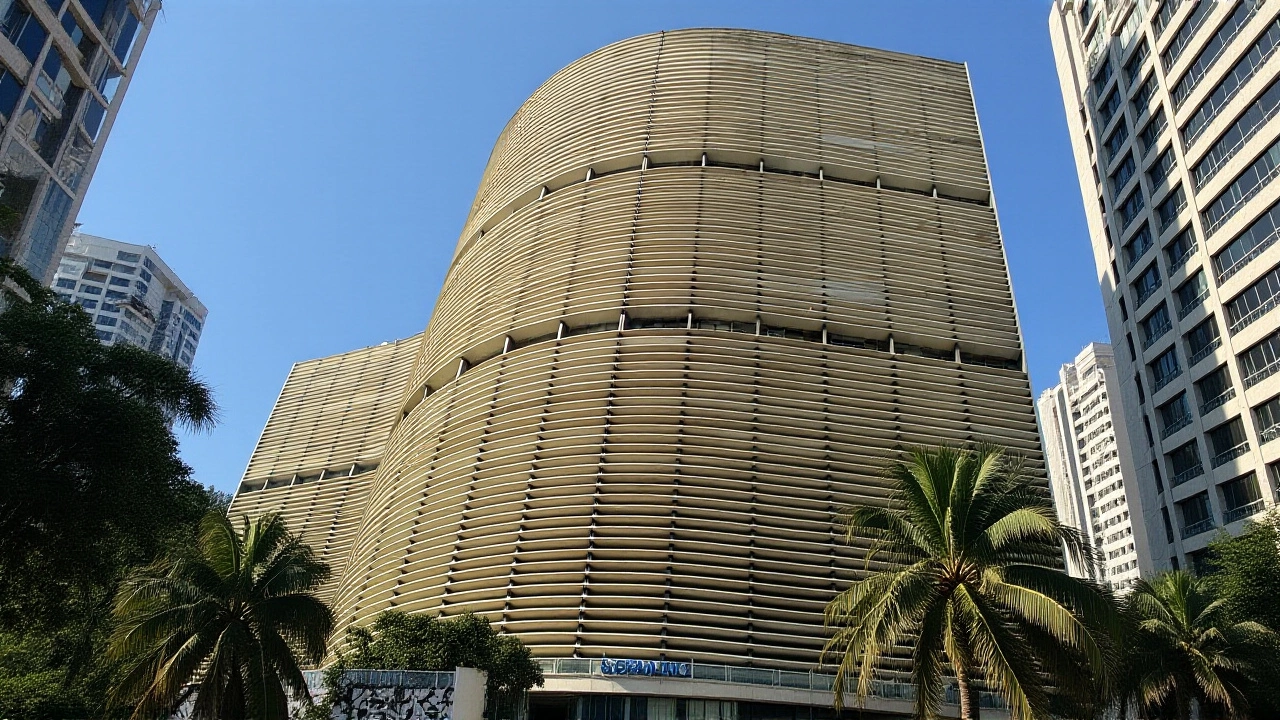When São Paulo, the bustling megacity of Brazil, checks the weather forecast, most residents expect a humid, tropical experience. Yet, thanks to its lofty position just north of the Tropic of Capricorn and an average altitude of roughly 760 meters, the city enjoys a surprisingly temperate, subtropical climate. According to a recent analysis by Britannica, July’s mean temperature hovers around 58 °F (14 °C)—cold enough for occasional frost—while February peaks at a balmy 69 °F (21 °C). The climate pattern matters because it shapes everything from water supply to air‑pollution risks in a metropolis of over 12 million people.
Geography and Elevation: Why the City Feels Cooler
The city's elevation is a silent hero. Sitting at about 760 meters (2,500 feet) above sea level, São Paulo captures cooler breezes that mountain‑range cities like Rio de Janeiro simply lack. The higher ground also reduces the intensity of solar heating, keeping maximum daytime temperatures in summer near 27 °C (80 °F) rather than the scorching highs seen further north.
Dr. Ana Silva, a climatologist at the University of São Paulo, explains, “The combination of latitude and altitude creates a climate that’s technically subtropical but feels milder than many think. It’s a classic case of geography overriding latitude.”
Seasonal Temperature and Rainfall Patterns
The year splits neatly into two regimes. From June through August, the city experiences a cool, relatively dry spell. Average daytime highs linger between 11 °C and 23 °C (52 °F‑73 °F), and monthly precipitation drops to just 40‑50 mm (1.6‑2 in). By contrast, the wet season—November to March—brings both heat and rain. January stands out as the wettest month, delivering a hefty 240 mm (9.4 in) of rain across roughly 21 rainy days.
Here’s a quick snapshot of the numbers:
- Annual precipitation: 1,455 mm (57 in)
- Coldest month: July, average 58 °F (14 °C)
- Warmest month: February, average 69 °F (21 °C)
- Peak humidity: March, 81 %
- Rainiest month: January, 240 mm (9.4 in)
These figures matter because they dictate water‑resource planning, agricultural cycles, and even the timing of major cultural events like the São Paulo Carnival.
Humidity, Air Quality, and Urban Challenges
March not only marks the tail end of the wet season but also the month with the highest humidity, averaging 81 %. When moisture clings to the air, it traps pollutants—especially from the city’s heavy traffic and industrial zones—creating a perfect storm for smog. The World Health Organization (WHO) has flagged São Paulo’s air‑quality index as “moderately unhealthy” during peak humidity weeks.
Mayor Ricardo Nunes recently pledged $2.3 million for a city‑wide green‑infrastructure push, aiming to plant 20,000 new trees in flood‑prone neighborhoods. “We need to tackle the climate‑air quality link head‑on,” he said at a press conference in April.

How Climate Affects Daily Life and the Economy
For ordinary Paulistanos, the weather dictates everything from commute choices to coffee‑shop seating. A sudden February downpour can halt traffic for hours, while a chilly July evening often fills cafés with patrons seeking warmth.
Economically, the abundant rainfall fuels the region’s coffee plantations, which rely on the steady June‑August dry spell to harvest beans without excess moisture damage. However, extreme rain events—like the 240 mm surge in January—have sparked occasional flash‑floods, prompting insurance claims that totalled roughly $45 million in 2022 alone.
The Instituto Nacional de Meteorologia (INMET) monitors these trends closely. Their latest report warns that a 1.5 °C rise in average temperature could shift the dry season forward by two weeks, jeopardising water reservoirs that already run low during August.
Future Outlook: Climate Change and Adaptation
Climate models suggest São Paulo may see a modest temperature increase of 1‑2 °C by 2050, coupled with more intense but less frequent rainstorms. The city’s planners are therefore eyeing “sponge city” concepts—permeable pavements, expanded wetlands, and rainwater harvesting—to buffer against both drought and flood.
Environmental NGOs, such as the São Paulo Green Initiative, argue that community‑level actions—like rooftop gardens and reduced car use—can mitigate the heat‑island effect that already adds 2‑3 °C to downtown readings on sunny days.
In short, the São Paulo climate is a delicate balance of altitude, latitude, and urban growth. Understanding its quirks isn’t just an academic exercise; it’s a daily survival guide for millions.
Frequently Asked Questions
Why does São Paulo stay cooler than other tropical cities?
São Paulo sits at about 760 meters above sea level, which reduces solar heating. Combined with its position just north of the Tropic of Capricorn, the altitude creates a subtropical climate that feels milder than places like Rio de Janeiro, which sits at sea level.
How does the seasonal rainfall affect the city's water supply?
Most of the 1,455 mm of yearly precipitation falls between November and March. Reservoirs fill quickly during this period, but the dry June‑August stretch can strain supply, especially if a January rainstorm is weaker than average. The city therefore relies on a network of dams that store excess rain for the drier months.
What health risks are linked to the high humidity months?
When humidity climbs above 80 %—typically in March—air pollutants linger, worsening respiratory conditions. The WHO rates indoor air quality as “moderately unhealthy” during these weeks, prompting hospitals to see a slight uptick in asthma and bronchitis cases.
Are there any long‑term climate projections for São Paulo?
Models from INMET predict a temperature rise of 1‑2 °C by mid‑century and more intense rainstorms. This could shift the dry season earlier and increase flood risk, prompting city officials to invest in green infrastructure and “sponge city” designs.
How do residents adapt to the rapid weather changes?
Paulistanos often keep umbrellas and light jackets handy year‑round. Businesses adjust operating hours during heavy rains, and many neighborhoods have community rain‑water collection systems that help alleviate temporary shortages.
